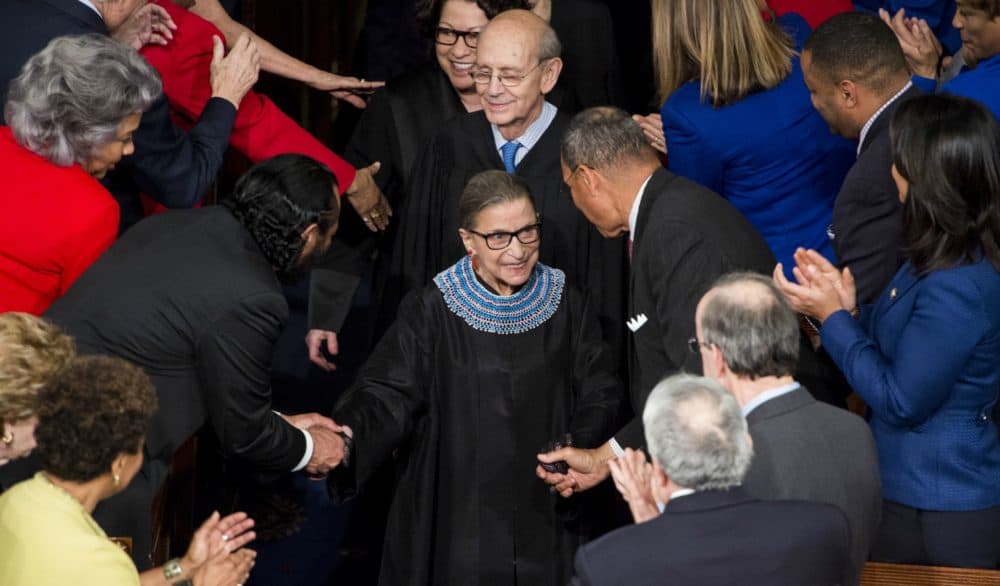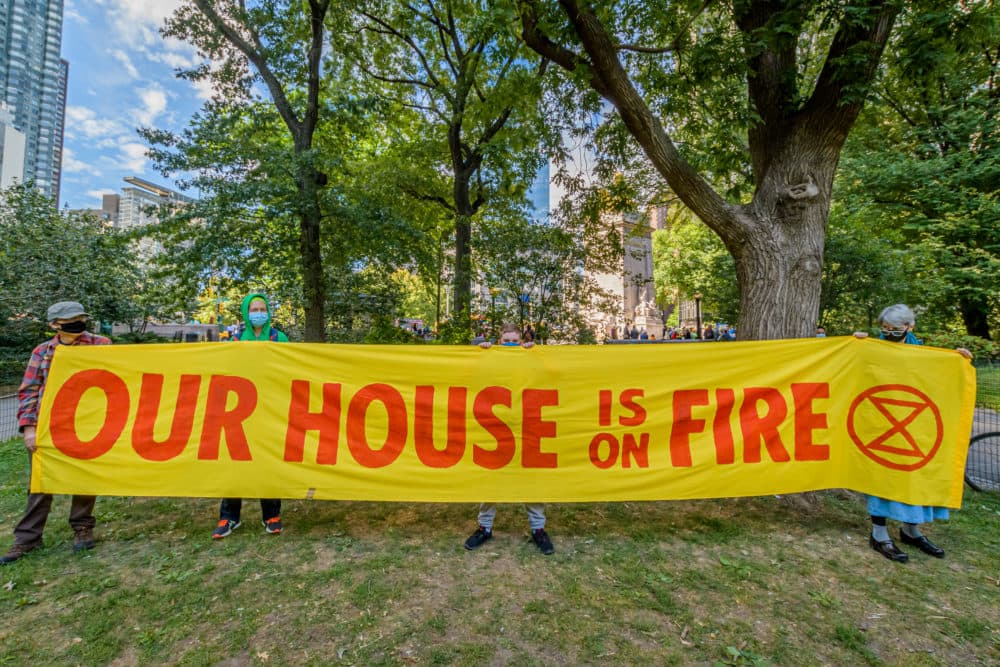Advertisement
Commentary
Why The Death Of RBG Is Very, Very Bad For The Planet

In April 2007, Ruth Bader Ginsburg voted with the 5-4 majority in Massachusetts v. Environmental Protection Agency, a landmark decision that established the EPA’s responsibility to regulate greenhouse gases that cause global warming.
With the death of Justice Ginsburg and the likelihood that a Trump-picked conservative will fill her seat, right-wing groups will be anxious to revisit Massachusetts in hopes of gutting it, an outcome that could derail regulatory and legislative efforts to address the climate crisis.
And regardless of whether the right is able to overturn the decision, a bench with a 6-3 conservative majority could impede a Biden administration’s efforts to implement its aggressive climate agenda.
This story goes back to 2003 when 12 states led by Massachusetts filed a petition at the EPA under George W. Bush, demanding that the agency regulate greenhouse gas emissions. The agency denied the petition in 2005, ruling that the Clean Air Act didn’t authorize the proposed regulations. The states appealed this determination, and after a lower court sided with the EPA, the Supreme Court agreed to hear the case.
The high court issued its ruling in favor of the states in 2007. The decision cleared the way for Obama’s EPA, in 2009, to determine that greenhouse gases “may reasonably be anticipated to endanger public health or welfare.” Based on this “endangerment finding,” the EPA implemented numerous new rules to curb emissions of carbon dioxide, methane and four other gases known to trap heat in the atmosphere.
The EPA’s endangerment finding — and the court case that undergirds it — has long been a thorn in the side of libertarian and anti-regulatory organizations, most of which have deep ties to the fossil fuel industry. It was squarely in the crosshairs of right-wing groups such as the Heartland Institute and the Competitive Enterprise Institute in the early years of the Trump administration. Trump’s first EPA administrator, Scott Pruitt, raised the possibility of rescinding the endangerment finding during Senate testimony in January 2018.
Massachusetts v. EPA is as critical to the climate movement as Roe v. Wade is to the pro-choice movement.
But Pruitt got caught up in scandals, and the EPA settled for the repeal of Obama-era rules such as the Clean Power Plan and the methane rule. Under new administrator Andrew Wheeler, the agency has adopted the strategy of simply not enforcing regulations.
The majority that the right now enjoys on the Supreme Court is tempered by Justice Roberts’ sensitivity to political extremism. But if conservatives gain a definitive majority and Trump is reelected, it’s not unlikely that ideologues both inside and outside the administration will seize upon making the reversal of the endangerment finding a top priority.
As the legal basis for the finding, Massachusetts v. EPA is as critical to the climate movement as Roe v. Wade is to the pro-choice movement. Striking it down it in the Supreme Court would be the ultimate victory for the climate deniers backed by the fossil fuel industry — and a demoralizing blow for climate activists.
Advertisement
It wouldn’t be easy. The edifice of scientific data supporting the finding has only become more imposing since 2009, and it would take a prodigious effort for Trump’s EPA to discredit it. Furthermore, the Trump administration has compiled a record of shoddy legal work in its dealings with the Supreme Court.

But knowing the inevitable legal challenges to a rollback would be heard by a sympathetic court could convince zealous bureaucrats in the Trump EPA that they should take their best shot at killing their most hated regulation.
If Joe Biden is elected in November, a conservative court could make it more difficult for him to achieve the ambitious climate goals he has set. In particular, a lopsided court could block a promising legal avenue that Biden might otherwise have at his disposal.
Writing on Law360, legal scholar Michael Quirke suggests that Biden’s EPA could leverage the National Ambient Air Quality Standards section of the Clean Air Act to expedite the rapid emissions reductions outlined in his climate plan. The NAAQS section currently regulates six “criteria” pollutants, including carbon monoxide and lead, and it requires states to develop plans to reduce concentrations to acceptable levels.
Quirke argues that the EPA could also regulate greenhouse gases under NAAQS, acknowledging the danger they pose to the climate and public welfare. In effect, it would establish a strong nationwide mandate to limit emissions — an endangerment finding on steroids. It would help to put emissions reductions programs on a solid legal footing across the nation.
... regardless of which candidate wins in November, the movement to transform the nation’s energy economy loses as the Supreme Court skews right.
Although using the NAAQS section of the Clean Air Act for greenhouse gases is an innovative and intriguing idea, red-state attorneys general would immediately find a way to sue Biden’s EPA if it were to implement such a rule. Considering that Massachusetts v. EPA was decided on a narrow 5-4 vote, there seems little chance a more conservative court would allow the extended NAAQS to stand.
And that’s just one instance of how Trump’s judiciary, attuned to corporate America’s desire for free markets and minimal regulation, will create headwinds for a Biden administration’s climate plan. The appointment of a sixth conservative to the bench only adds an exclamation point.
So regardless of which candidate wins in November, the movement to transform the nation’s energy economy loses as the Supreme Court skews right. The death of Justice Ginsburg casts a long shadow.
This story is part of Covering Climate Now, a global journalism collaboration of more than 400 news outlets committed to better coverage of the climate crisis. This Sept. 21-28 collaborative week focuses on the intersection of climate change and politics.
